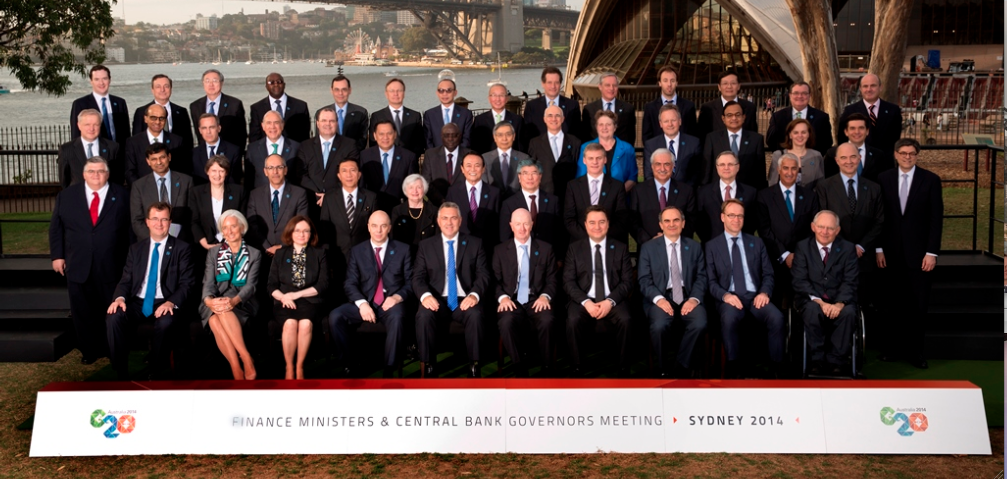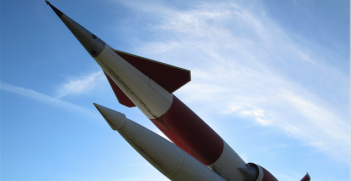Removing Obstacles to Trade: Standstill to Move Forward

Mark Thirlwell looks at the various obstacles to trade and how a renewed commitment to the stand still on protectionism can solve the stagnancy in global growth.
For more than 200 years, international trade has served as a driver of productivity gains and innovation, and as an important enabler for catch-up economic growth. Since the second half of the 20th century, the expansion of world trade has been supported by a multilateral trading system – as represented by the General Agreement on Tariffs and Trade (GATT) and its successor the World Trade Organistion (WTO) – which has helped set and police the global rules of the game. Sure enough, in the two decades leading up to the Global Financial Crisis, this oversaw a period of extremely rapid growth in cross-border exchange and contributed to a sustained period of rising global prosperity. By doing so, it likely also made an important contribution to global security. Today, however, world trade growth has turned sluggish even as the multilateral system that helps safeguard it has run into difficulties.
As the world’s premier international economic forum, the G20 has a profound interest in supporting the contribution that international trade can make to global growth, and in maintaining the health of the system that underpins it.
A boost is needed for both global growth and world trade
According to the International Monetary Fund (IMF), the world’s GDP grew at about three per cent in real terms last year. That was down only slightly on the 2012 outcome but also well below pre-crisis growth rates and most estimates of trend growth. This year, the IMF thinks growth will pick up to about 3.6 per cent before speeding up again to just below four per cent in 2015. Assuming it materialises, this gradual acceleration in global activity will be welcome. But it will still be disappointing given both the depth of the output loss resulting from the rolling (financial and Eurozone) crises of recent years and the past performance of the world economy. Sluggish global growth has been accompanied by lacklustre international trade. In 2013, the IMF reported that the volume of world trade in goods and services rose by just 2.7 per cent – that compares to pre-crisis growth rates of more than seven per cent. And while the Fund forecasts trade growth to strengthen (to 4.3 per cent this year and 5.3 per cent in 2015), it’s still expected to remain well off the pre-crisis pace of expansion.
Energising the global trading system
The post-crisis slump in activity is likely the most important explanation for this soft outlook for world trade, but many observers also worry that the current state of the multilateral trading system is a significant contributory factor. Until late 2013, the most compelling piece of evidence justifying this concern had been a repeated failure by the WTO and its members to complete the Doha Round of trade negotiations. Launched back in November 2001, Doha had spent most of the intervening years trapped in limbo or – as one Indian trade minister once put it – poised somewhere “between intensive care and the crematorium”.
That assessment has changed little since December 2013, when the WTO’s 159 members finally reached an agreement in Bali on a deal covering trade facilitation. But while Bali represented a last-minute recovery for the WTO, confirming there was still some life left in the system, it did little to assuage the critics. After all, Bali did not come near to meeting the original ambitions of Doha, let alone attempt to grapple with the details of what an ambitious, 21st century trade agenda might entail: a focus on issues such as global value chains and the rise of the “made in the world” phenomenon, resource security, the role and treatment of state-owned enterprises and the relationship between the WTO and the rapidly proliferating network of bilateral, regional and now mega-regional trade agreements.
Promises and problems with trade
From the time of their first Summit in Washington DC in November 2008, G20 Leaders have stressed the importance of maintaining open markets for trade and investment. This rhetoric has been supported by two specific commitments: a) a pledge to refrain from protectionism (the “standstill”) and; b) a promise to complete the Doha Round.
Unfortunately, neither has been an unqualified success – instead, the world has had to settle for a “Doha Lite” rather than the ambitious trade round originally targeted. And although G20 Leaders have repeatedly affirmed their promised standstill on protectionism – most recently at Saint Petersburg when they extended it to end 2016 – this has not prevented some protectionist backsliding. According to the Brookings Institution’s Professor Simon Evenett, by the end of August 2013, collectively, G20 members had “implemented a total of 1527 beggar-thy-neighbour measures since they adopted their standstill in November 2008.”
Stepping up to the plate
Given their stated desire to boost global growth, leaders need to re-emphasise the crucial role played by both the multilateral trading system and the international trade it supports in facilitating the growth and jobs that are the central focus of the G20 itself. At their meeting in Sydney in February this year, G20 Finance Ministers committed to producing “comprehensive growth strategies” for their economies as inputs to a future Brisbane Action Plan, pledging to “develop ambitious but realistic policies with the aim to lift our collective GDP by more than two per cent above the trajectory implied by current policies over the coming five years.”
Given these commitments included general plans for “enhancing trade”, both the individual country targets and the overarching Brisbane Action Plan should now include specific, trade-related policies – including measures to remove barriers and impediments to international exchange both at and behind the border, along with initiatives to strengthen the WTO itself. This also means that G20 members not only need to take their commitment to the standstill more seriously than some have in the past, but in addition, look to roll back previously implemented protectionist measures that have undermined their no-protectionism pledge.
Finally, they also need to work together to ensure that the various bilateral, regional and mega-regional deals currently in prospect or under negotiation among G20 members serve to complement the multilateral system rather than undermine it.
Mark Thirlwell is Chief Economist at Austrade.
This is an extract from G20: Words into Action Brisbane 2014, to be published by Faircount Media in association with the Australian Institute of International Affairs in October 2014.





